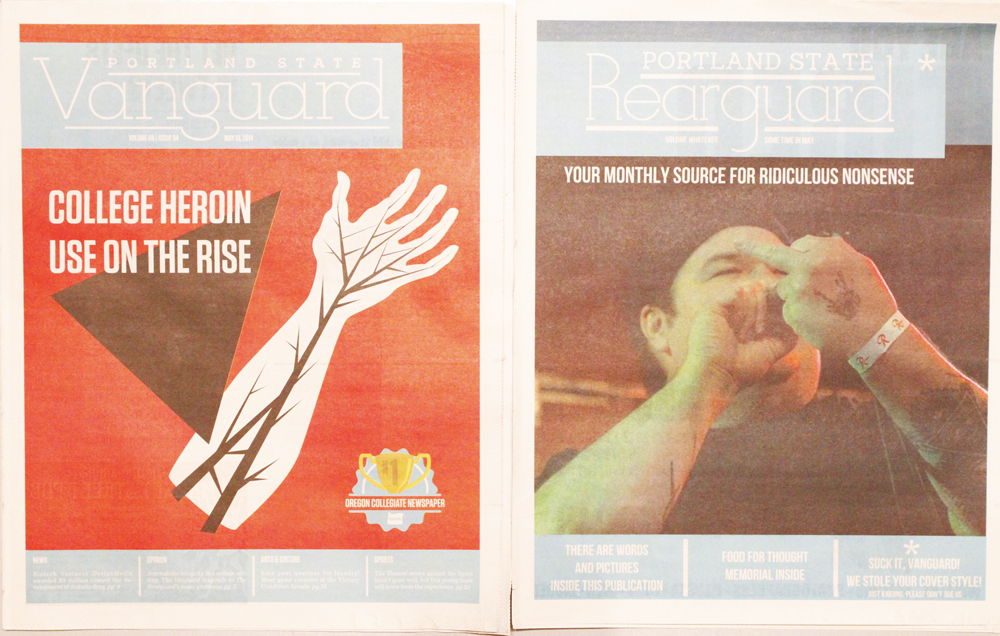No one is naturally beautiful. That is, no one except for men. Men are naturally beautiful. They must be. With a haircut, a shave and some deodorant (if we’re lucky), they’re done. That’s all they have to do.
Beauty the barbaric
No one is naturally beautiful. That is, no one except for men. Men are naturally beautiful. They must be. With a haircut, a shave and some deodorant (if we’re lucky), they’re done. That’s all they have to do.
Women, on the other hand, we need work. This is what we’re told from as early as we can remember. Since our first assortment of bright pink and purple nail polishes, we have been hooked on primping and preening. How could we have known how attached we would become to the vast array of lotions, creams, colorings and attachments we so impulsively apply?
Beauty is pain
It’s difficult to pinpoint exactly when women first embraced the idea of suffering for beauty. Were men in short supply when our feet were broken and bound, a thousand-year-old practice banned by the Chinese only in 1912? Did we truly want three-inch-long feet? Was it worth appearing frail and weak, fainting and having miscarriages in order to wear those suffocating corsets?
To be sure, today’s woman is a more sensible woman. Even so, we still endure torturous devices in the form of panty hose, high-heeled shoes and bras. Modern technology, being what it is, allows us to snip off what we don’t want. For those of us blessed enough not to have to lug around gigantic bosoms, but dim enough to want to, we can stuff our bodies (not our bras) with saline or silicon, deftly positioned and assured to stay. No leaking. They promise.
If body augmentation isn’t your bag, there are the colors, lotions, powders and creams that we have been brainwashed into believing we must apply. At a young age, women learn not to leave the house without: concealer, base, face powder, eyeliner, three different eye shadows, mascara, lipstick, lip-pencil, lip-gloss and rogue. At night we are to wash with special soaps and use moisturizers. Essential utensils include tweezers and the barbaric eyelash curler.
Keeping with the edict that beauty comes with suffering, the products we use to beautify ourselves, even our shampoos and hand lotions, more often than not, contain carcinogenic ingredients. According to Samuel S. Epstein, M.D., chairman of the Cancer Prevention Coalition and professor emeritus of environmental medicine at the University of Illinois School of Public Health, the following types of cosmetics often contain carcinogens: mascara, blush, lipstick, glosses and lip pencils, shampoo, hair dye, talcum power, shaving cream, hair conditioner, dandruff shampoo, eye shadow, face powder, face foundation, concealer, hair spray and nail polish.
Carcinogens in cosmetics
Through his research, Dr. Epstein has identified two different types of cancer-causing agents in cosmetics. One type is what he terms a “frank” carcinogen. This type of carcinogen is known to directly cause cancer. The other type of harmful agent present in many cosmetics is called a “hidden” carcinogen. These substances are not carcinogens themselves, but can become carcinogenic under the right conditions.
In addition to makeup, carcinogens are present in shampoos and detergents. Dark permanent hair dyes have been shown to double one’s chances of getting bladder cancer and also pose a risk for other types of cancers. Artificial colors, such as Blue 1 and Green 3, are carcinogenic. Cosmetic colors such as D&C Red 33, FD&C Yellow 5, and FD&C Yellow 6 can have impurities that cause cancer. Talcum powder, a common cosmetic of many grandmothers, is carcinogenic. Care should be taken not to inhale talc and to avoid using it in the genital area, so as to decrease the risk of ovarian cancer. Finally, lanolin, while in its pure form is safe, can be contaminated with carcinogenic pesticides such as DDT, dieldrin and lindane.
Carcinogens in cosmetics enter the body by permeating the skin and through inhalation. Since makeup and lotions are left on the skin for long periods of time, the risk of absorbing harmful chemicals into the body is increased with these products. When factoring in a lifetime of daily usage, it doesn’t take a mathematician to see the increased risk. While we certainly cannot remove all carcinogens from our immediate environment, lessening our exposure to carcinogens whenever possible makes sense. It is important to note that many believe the carcinogens in cosmetics are present in such small amounts that they pose no risk of cancer whatsoever.
Having discarded foot binding and corsets, have we now let ourselves be convinced that applying carcinogenic face powders and creams is acceptable? Will we allow those reincarnated purveyors of beauty, those three-inch lotus-foot-binding corset-pushers to push cancerous products on us today? Why can’t we appreciate ourselves as we were made?
Why are men so naturally beautiful?
“Frank” carcinogens
Source: Unreasonable Risk (2001) by Dr. Samuel Epstein
Butylated Hydroxyanisole (BHA)Butylated Hyroxytoluene (BHT)Butyl Benzylphthalate”Coal Tar Dyes” (and Lakes)
D&C:Red 2, 3, 4, 8, 9, 10, 17, 19, 33Green 5Orange 17
FD & C:Blue 1, 2Green 3Red 4, 40Yellow 5, 6Blue 1, 2, 4Diaminophenol Disperse Blue 1Disperse Yellow 3NitrophenylenediaminePhenyl-p-phenylenediamineCrystalline SilicaDiethanolamine (DEA)Dioctyl AdipateFormaldehydeGlutaralHydroquinoneMethylene ChloridePolyvinyl PyrrolidonePyrocatecholSaccharinTalc
For more information
Cosmetics Toiletry and Fragrance Association: ctfa.org
Friends of the Earth: foe.org
Dr. Samuel Epstein, Unreasonable Risk
Cancer Prevention Coalition: preventcancer.com
The EWG Skindeep Online Database: ewg.org
Scorecard.org
The National Institute for Occupational Safety and Health: cdc.gov/niosh
Coop America: coopamerica.org




